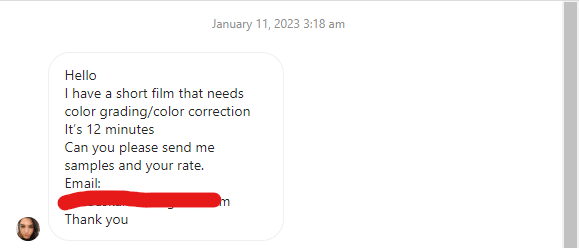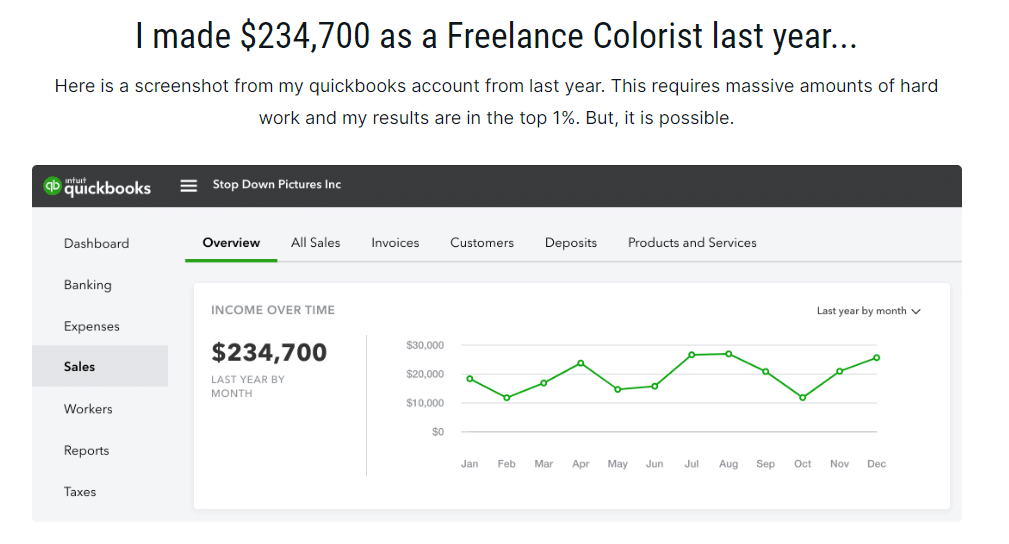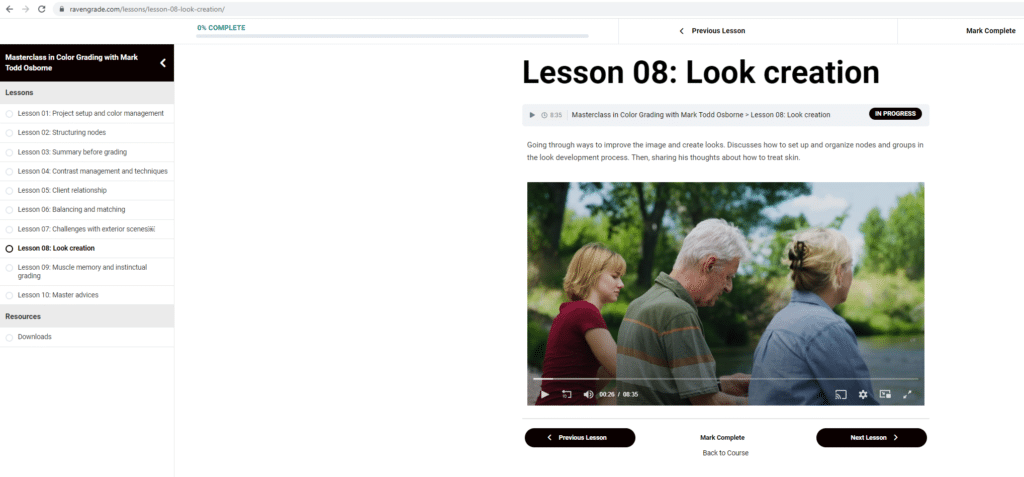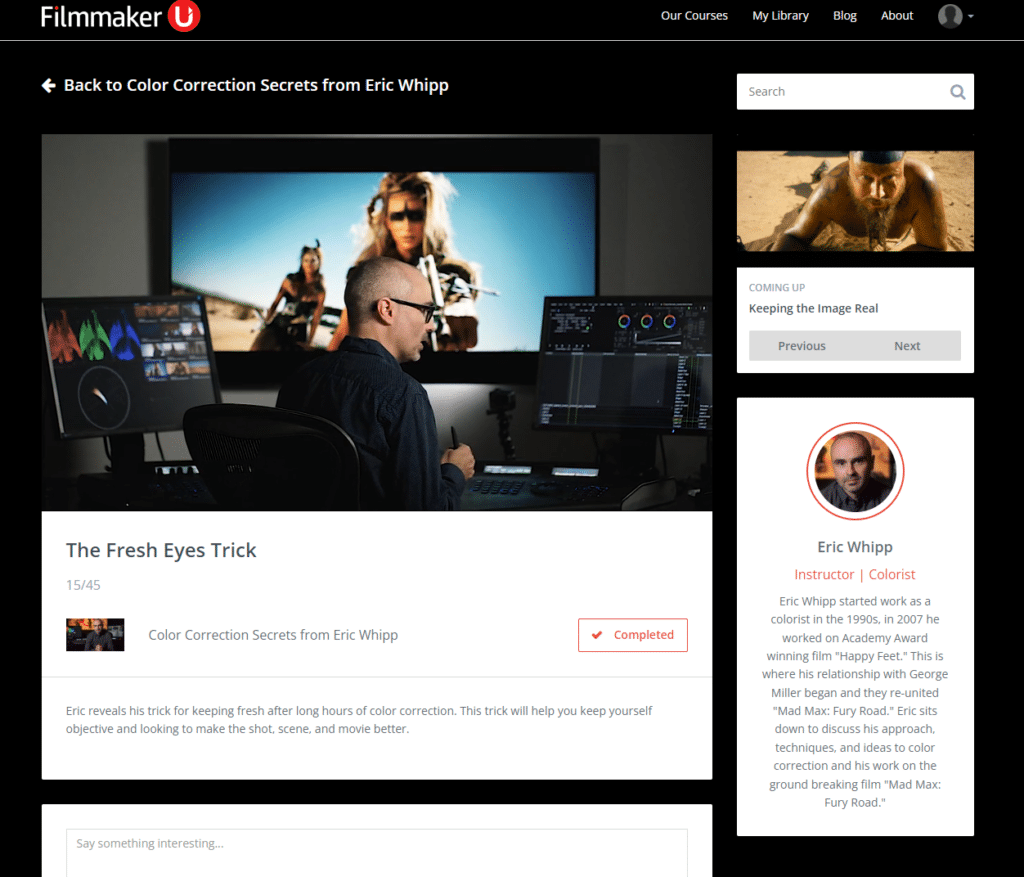I’ve been lucky to accidentally be in the film industry even though I am an Electronic Communications Engineering graduate. The film industry can pay really low in the beginning but there is a huge chance of becoming one of the highest-paid directors, cinematographers, or editors.
However, there is this one career in the film industry that most people might not have heard of. It’s color grading.
Wait, what? Should the editor just do it?
My answer is “respectfully, heck no.”
Color grading is a subject of its own. If you’re a director, you’d want your color grading work to be handled by a specialist. He needs to know the language of film through color, he should know how to maximize the color grading suite, he should work efficiently, and he should have a trained pair of eyes.
I am a professional colorist and whenever I take a long break, I need to retrain my eyes. What more if you’re an editor who spends months cutting the film? I’m not saying that the editor can’t be the colorist. What I’m saying is that it’s not that efficient.
The Demand for Color Grading is Increasing exponentially

I’ve been watching a lot of documentaries lately and I noticed that even documentaries are starting to be graded by professional colorists. Music videos, commercials, and short films too.
My wife, who is not in the film industry, once told me that she thinks the certain film she’s watching is low budget. I asked her why. I saw that there were CGI dinosaurs so I’m amazed that she thought the film was low-budget. She told me, “It’s the overall look. It looks low budget.”
So, I analyzed and realized that the film wasn’t graded by a professional colorist. It’s like the editor just adjusted the temperature to have a blue tint. The subjects aren’t popping out, the edges are so soft, the shadows of the CGI dinosaurs were not consistent with the background, etc.
These are things that will not escape a professional colorist’s eyes.
If my wife noticed that, I’m sure millions of people are also starting to notice a good grade from a bad grade.
The rate for Color is Great
Color Grading is a career that can give you, not just a living, but a fortune. Waqas Qazi shared his freelance colorist income for a year and it’s $234,700. It was actually him that made me aware of how great the potential of this career is.

I took his course and practiced really hard every day.
Right now, I run my remote color grading business charging thousands of dollars for color grading projects. The great thing about his course is that he teaches the skills you need in becoming a Freelance Colorist. It means, it gives you knowledge on how to color grade, how to deal with clients, and how to find clients.
It’s like a 3-in-1 course. I am so thankful for that course because I won’t be where I’m now without it.
If you’re interested, go to his course page: Freelance Colorist Masterclass
The basic salary for a senior colorist in the US is $500,000. But, I’ve seen freelancers on Upwork and Fiverr making way more. Once you’ve built your portfolio and the clients love it, they’re willing to pay your rate.
Color Grading is Future-proof

DaVinci Resolve Studio is the color grading software most colorists use. There is also Baselight, which is more expensive but doesn’t really have that much edge over DaVinci.
Every month there are updates and some of them are really groundbreaking updates from DaVinci. One of the updates I want to discuss is the automatic shot match tool.
If the software can match 100% accurate all the footage, colorists will be in danger of losing their jobs. We’ll be replaced by one button.
However, no matter how advanced DaVinci Resolve is, the automatic shot match tool is nowhere close to accurate.
It’s hard to match a look accurately across the entire film. The sudden light change, the difference in background, selecting the skin, fixing the sky, etc. These are things that colorists think about solving in every scene.
Eric Whipp, one of my favorite colorists, would spend months grading when there is a lot of masking and tracking needed to perfect a scene. I was blown away by his course because he revealed his workflow and it involves really specific adjustments like masking out just the bright parts of the face. Masking the eyes and tracking them. etc.
These are things that I will do if the producers have a lot of budget for color since it’ll really take a lot of time. The results will really be amazing, though.
Anyway, back to the point. All these works that colorists make, how would a machine or software replace us?
You can Work Remotely
If you’re like me, I don’t really like the morning rush of going to the office. The stress is just too tiring and it’s a bit dangerous driving when you’re about to be late to work.
Right now, I wake up. Make my coffee. Sit in my color grading studio at home and start working on my PJs.
I just need to suit up when I have a zoom meeting with clients.
For introverts, like me, this is a dream job.
There are clients who prefer just texting me the instructions. We communicate through Instagram DM’s until the job’s done.
And the best part is, this job at home makes more bucks than going to work. My past work here in Japan pays about $12 per hour. If I charge $36 per hour, I’m making 3x more than a corporate job that requires me to be physically present.
You just need the process of working remotely. You can also learn this from Waqas Qazi’s course. He demonstrated the different types of receiving and sending back files to clients.
Different opportunities branch out from it
I have 2 Instagram accounts. It’s @jvckrodriguez and @beyondthesightofficial. I tried growing them through different strategies. One is with reels and the other one is with stills. The one with reels reached more people and made me more followers. The other one is new and is also growing slowly.
The amazing thing is the newer one with just stills made me more clients than the one that made more followers.
Anyway, the point here is that I grew a following from my color grading skills. It may not be as much, but it’s slowly becoming an asset. One can make me money by becoming an Instagram “Influencer”, and the other one can make me money by bringing me more clients.
It’s just difficult to maintain them when clients came at the same time. I’ve been very busy that I couldn’t post that much. Even this blog is compromised by having a lot of clients. But, it’s very rewarding to be paid for something that you’re passionate about.
You can grow a Youtube Channel on color grading, grow on other social media like Twitter and Facebook, you can create courses to sell, etc.
When you’ve become a really good colorist, you can use that skill to develop a digital asset that will soon add to your source of income.
Chance to Work with the Best Directors and Cinematographers.
I haven’t worked with someone like James Cameron but I’ve worked with directors that really shared their visions with me. Some are really good at communicating what they want for their film and for me it’s very priceless learning directly from them.
All these courses will gear you up with how-to’s but the real world will teach you the why’s.
Like I worked with one director that really liked the look I created on a certain forest scene. But, he added “Can you make his coat darker so that it blends with the darkness of the tree behind him? In that way, people will feel that he’s being engulfed by nature.”
That was something that I never learned from all the color grading courses I’ve taken.
The more you work with different directors, the better you become. A Colorist is a Director of Photography in post. You shape the light, you set the mood, and you make the scenes glued together.
Being equipped with the knowledge of different directors and cinematographers, you’ll become one of the best colorists in a shorter period of time.
It’s not a boring desk job
You can express yourself since this is a form of art using really technical processes. I have to admit that there are a lot of boring things in color grading, specially shot matching.
The best part is creating the look. It’s really magical how we turn something very ordinary into amazing cinematic scenes.
After deciding and creating the look comes the hard part. It’s matching the rest of the clips to the look you’ve created. The film should flow seamlessly so you need to match them really well.
Different scenes come with different backgrounds, subjects, lighting, and other problems to fix. But no matter how boring it is, I will take this boring 100% of the time instead of the boring I had with my previous corporate job.
Flexibility in the type of career
You can work as an employee, a freelancer, or start your own Color Grading business. I know the fact that there are some people who don’t enjoy freelancing or running their own businesses.
There are people who want to climb the corporate ladder and it’s completely fine. Color grading can also take you there. You can apply to color grading companies like our company, Beyond The Sight.
We are, soon, going to hire colorists when I can’t handle all the clients that are coming in. You can also apply to post-production studios in your city once you’ve mastered color grading and built your portfolio. I recommend Artgrid in practicing and showcasing your skills. It allows you to download raw films that you can experiment on.
Take courses and not just online free videos since the courses are filled with knowledge that you might not have searched for online. I highly recommend Waqas Qazi because he’s a professional colorist and a teacher. Some are good in color grading but don’t really know how to put up a course that will take a person from point A to point B.
Don’t be blinded by other people’s credentials because you need a great teacher and course outline. For example, Lowepost’s courses are filled with pro-colorists. But they were too brief and you’ll not be confident to take clients after taking all the courses available.
Mark Todd Osborne is someone I look up to, as a colorist. His course in Lowepost is too brief. By the way, Lowepost created a new website, Ravengrade, where you can find the lessons of the pro-colorists.

I am still subscribed to Ravengrade but as you can see, that’s the whole course outline for his tutorial. When it comes to look-creation, I was hoping for things like how to create a certain vintage look or teal and orange. There was only one example and he just saturated it, made a vignette, and tell you that skin tones are really important.
I love Matt Todd Osborne and his works but the course was too brief. How awesome it would be to watch him grade like 10 scenes from start to finish. That or other things that will equip us more will be of more value.
Coming from a beginner who didn’t know anything about color grading, the best color grading course out there is still Freelance Colorist Masterclass.
If you’re an intermediate colorist, you’ll appreciate courses from Lowepost and Ravengrade. But, what I recommend is Eric Whipp’s course because he explained the process better. He even used Mad Max: Fury Road’s clips to show how he grades.

Conclusion
Color Grading is a very rewarding career that’s future-proof! You can never go wrong in diving into this career. Start learning now and become a film colorist soon!